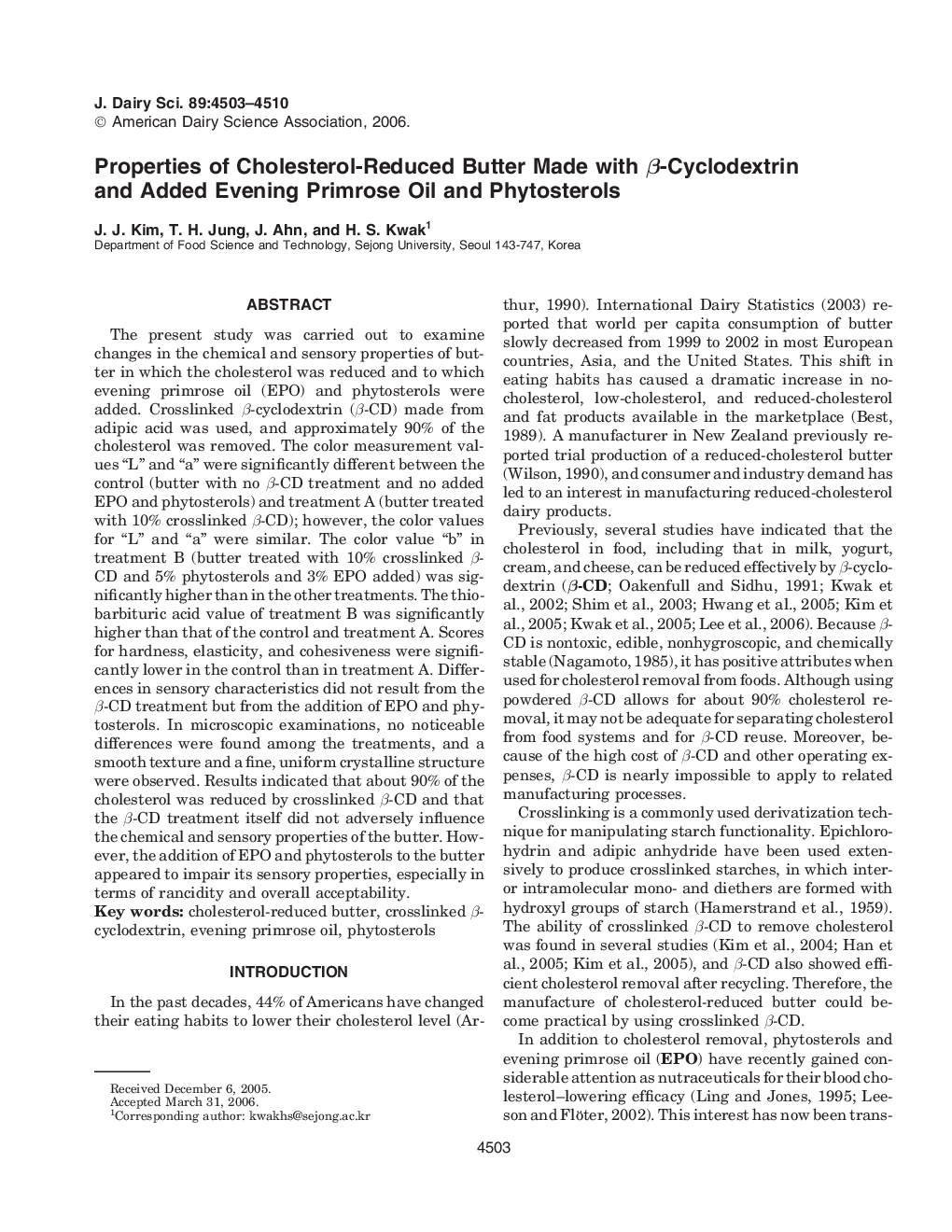| Article ID | Journal | Published Year | Pages | File Type |
|---|---|---|---|---|
| 2440829 | Journal of Dairy Science | 2006 | 8 Pages |
Abstract
The present study was carried out to examine changes in the chemical and sensory properties of butter in which the cholesterol was reduced and to which evening primrose oil (EPO) and phytosterols were added. Crosslinked β-cyclodextrin (β-CD) made from adipic acid was used, and approximately 90% of the cholesterol was removed. The color measurement values “L” and “a” were significantly different between the control (butter with no β-CD treatment and no added EPO and phytosterols) and treatment A (butter treated with 10% crosslinked β-CD); however, the color values for “L” and “a” were similar. The color value “b” in treatment B (butter treated with 10% crosslinked β-CD and 5% phytosterols and 3% EPO added) was significantly higher than in the other treatments. The thiobarbituric acid value of treatment B was significantly higher than that of the control and treatment A. Scores for hardness, elasticity, and cohesiveness were significantly lower in the control than in treatment A. Differences in sensory characteristics did not result from the β-CD treatment but from the addition of EPO and phytosterols. In microscopic examinations, no noticeable differences were found among the treatments, and a smooth texture and a fine, uniform crystalline structure were observed. Results indicated that about 90% of the cholesterol was reduced by crosslinked β-CD and that the β-CD treatment itself did not adversely influence the chemical and sensory properties of the butter. However, the addition of EPO and phytosterols to the butter appeared to impair its sensory properties, especially in terms of rancidity and overall acceptability.
Keywords
Related Topics
Life Sciences
Agricultural and Biological Sciences
Animal Science and Zoology
Authors
J.J. Kim, T.H. Jung, J. Ahn, H.S. Kwak,
